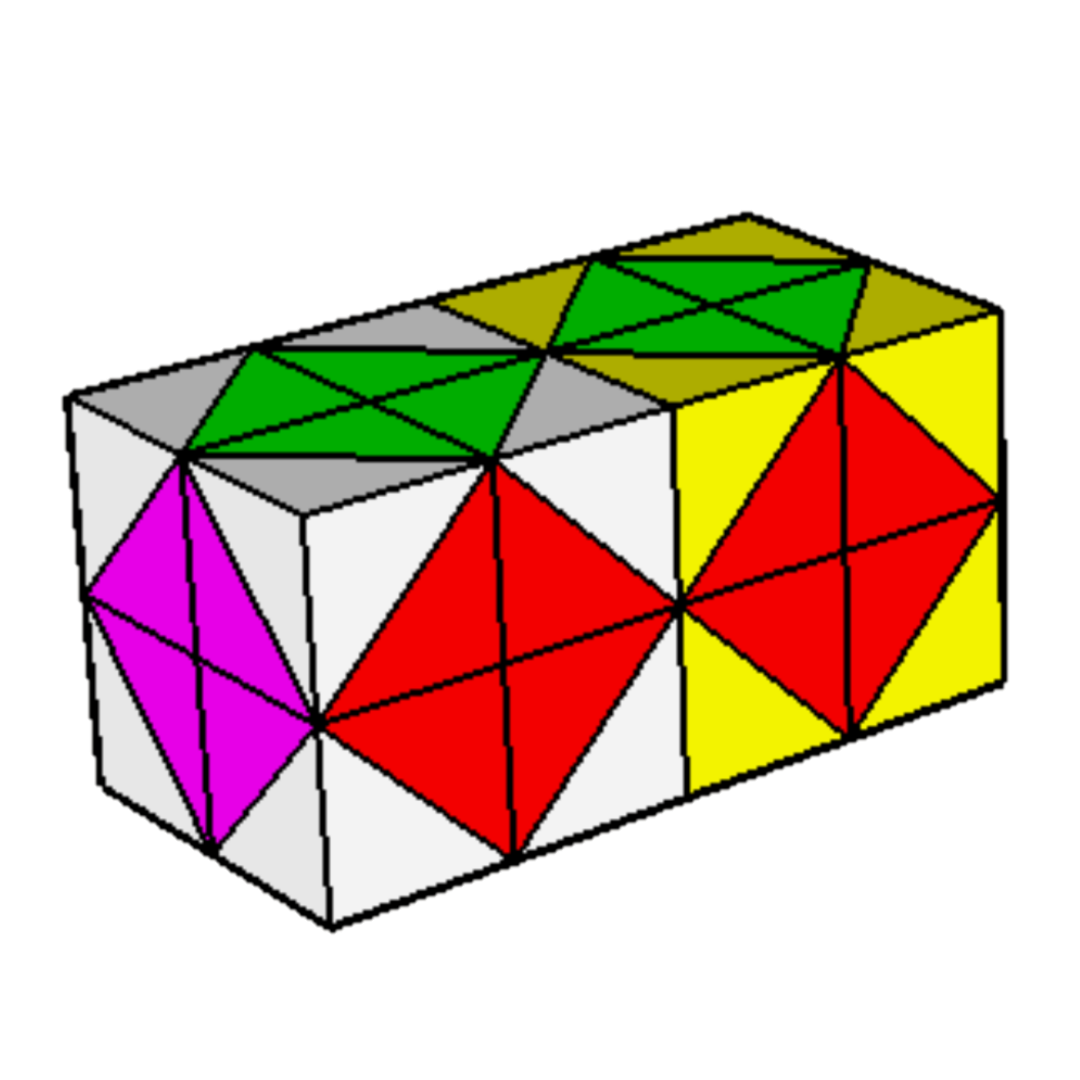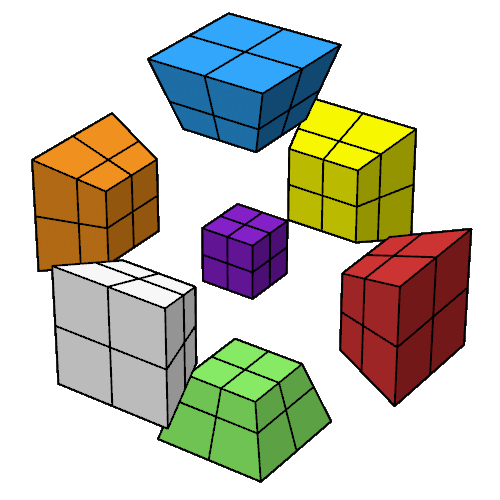Melinda’s 2x2x2x2¶
Melinda’s 2x2x2x2
4D Shape: Tesseract
Physical Shape: Rectangular prism
Pieces: 16 4c
Magnets: 384
Permutations: \(3.3*10^{27}\)
See Melinda’s 2x2x2x2 website for her project overview.
History¶
Invention¶
Many hypercubers, including Melinda Green (one of the developers of MC4D) wanted to create a physical 34, but sadly it just seemed too complicated. Eventually, she decided to focus on the 24 due to its simplicity of only having 16 4c pieces.
Throughout 2013 and 2014, Melinda was in contact with Oskar van Deventer, and together they tried to think of any possible mechanism for a physical 24. Originally they were determined to find a good mechanism that didn’t have to rely on magnets, but after several failed attempts a magnetic mechanism was the only solution. In 2017, Melinda built the first prototype and shared an unlisted YouTube video showing it off to the mailing list members.
A few months later, Melinda built a 2nd prototype using 3D printing from a company called Shapeways (which just so happened to offer 8 colors, 6 of them being standard Rubik’s Cube colors, plus pink and purple (this is where the standard 4D colour scheme comes from)).
Popularization¶
At the Gathering For Gardner conference of 2018, Roice Nelson got to show his physical 24 to Erno Rubik. It was reported that his only comment was something along the lines of “none of the derivative puzzles matter and that only his original invention is important”.
Also in 2018, the YouCuber CanChrisSolve? made a series of videos where he solved the physical 24, which have now amassed over 100,000 views combined! A month later, a Spanish YouCuber called TheMaoiSha made a video explaining the physical 24 which now sits at over 800,000 views, exposing the world of hypercubing to more and more people.
Because of all this recognition, many new people bought the puzzle, but it was still pretty expensive because of the costs of 3d printing and the labor of manual assembly. Eventually Melinda moved away from 3D printing in favour of injection molding, which greatly reduced the price while increasing the quality dramatically.
Where can I buy one?
Read this section of Melinda’s website.
How Does the Physical 2x2x2x2 Work?¶
Each twist and rotation on the virtual 24 is possible to do on the physical 24, albeit with certain moves requiring some extra setup. See the canonical moves page for a more detailed explanation.
Also see Melinda’s shorter video on the official canonical moves.
In December of 2017, Melinda made a longer video fully explaining the puzzle, including its canonical moves, scrambling, and more.



